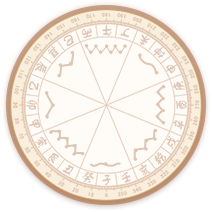包含多种语法的英语经典句子


精炼而富有韵味:探索英语经典句子中的语法艺术的魅力
在语言的海洋中,英语的经典句子犹如璀璨的繁星,聚集成一部语法的交响乐章。它们不仅富含深邃的内涵,而且巧妙地运用了各种语法结构,让每句话都能成为理解英语魅力的窗口。今天,让我们一起沉醉于这些跨越时代的语言瑰宝,感受它们的智慧和优雅。
让我们领略到的是莎士比亚的诗意浸淫。"To be, or not to be, that is the question"(生存还是毁灭,这是个问题),这句话展现了动词不定式与疑问句的完美结合,展现出人生的抉择与深度。莎士比亚的用词犹如韵律诗,引导我们思考生活的真谛。
在简·奥斯汀的小说中,句法更是精巧无比。"I have no common sense, it is a blessing I must needs confess"(我没有常识,但这确实是一种必须承认的福气),这里的双重否定与自相矛盾的表述,体现了英语的讽刺和幽默感,引人会心一笑。
再看爵士乐般的英语,如F. Scott Fitzgerald在《了不起的盖茨比》中的:“So we beat on, boats against the current, borne back ceaselessly into the past”(我们奋力划桨,逆流而上,却无法逃脱过去的牵绊)。这句中,过去分词短语和形象的比喻,展示了英语的音乐性和情感深度。
而现代英语中,John Green在《我们都是星之子》里的:“The pain demands to be felt. It asks for nothing more”(痛苦需要被感知,它只需要接纳)。简洁而有力的句子,突显了英语的直白和力量。
这些经典句子的写作特点在于,它们不仅展现了英语语法的多样性,如时态的变化、从句的运用、名词性从句的灵活构造等,而且融入了丰富的修辞手法,如比喻、拟人、排比等,使得表达既有深度又富有感染力。它们就像一面镜子,映射出英语语言的无穷可能。
对于中老年读者来说,这样的文章既能重温英语学习的乐趣,也能在日常生活中运用这些生动的句子来提升口语表达,丰富内心世界。不妨在闲暇时光,翻开这些经典篇章,感受英语的韵律之美,让智慧与情感在心灵深处共鸣。
这些经典英语句子就像一座语法的宝库,它们以独特的艺术形式,展现了英语的优雅与力量。无论是在课堂学习,还是日常交流,都能从中汲取精华,提升语言素养,享受英语的魅力。
英语中各个语法用英语怎么说
在英语中,不同类型的语法结构和概念都有其专门的术语。以下是英语中一些主要语法概念的英文表达:
1. Parts of Speech (词类):
Nouns (名词) - 如:person, house
Verbs (动词) - 如:run, read
Adjectives (形容词) - 如:happy, beautiful
Adverbs (副词) - 如:quickly, quietly
Pronouns (代词) - 如:he, they
Prepositions (介词) - 如:in, on
Adjectives (冠词) - 如:a, the
Conjunctions (连词) - 如:and, but
Interrogatives (疑问词) - 如:who, what
2. Sentence Structure (句子结构):
Simple sentence (简单句) - consists of one independent clause
Compound sentence (复合句) - contains two or more independent clauses connected by conjunctions
Complex sentence (复合-复杂句) - has an independent clause with one or more dependent clauses
Compound-complex sentence - a mixture of compound and complex sentences
3. Tenses (时态):
Past tense (过去时) - used to describe actions in the past
Present tense (现在时) - refers to ongoing actions or general truths
Future tense (未来时) - expresses actions that haven't happened yet
Present Perfect (现在完成时) - describes an action that started in the past and continues to the present
Past Perfect (过去完成时) - tells what was done before another past action
4. Subject-Verb Agreement (主谓一致):
Proper subject-verb agreement regarding singular/plural forms
5. Verb Phrases (动词短语):
Infinitive (不定式) - to do
Gerund (动名词) - doing
Participle (分词) - -ing, -ed forms
Modal Verbs (情态动词) - e.g., can, should, will
6. Punctuation (标点符号):
Comma (逗号), Semicolon (分号), Colon (冒号), Parentheses (括号), Quotation marks (引号)
7. Grammar Rules (语法规则):
Agreement (一致性)
Subject-verb agreement
Pronoun usage
Sentence fragments (不完整句子)
8. Grammar Learning (语法学习):
Learning grammar rules (掌握规则)
Practicing grammar exercises (做练习)
Grammar books (语法教材)
Grammar tutors or courses (语法课程)
了解这些术语有助于你更深入地理解英语语法,无论是在学习还是教学中都能提供坚实的基础。
各种语法的英语表达
在英语中,语法结构丰富多样,下面是一些主要语法类型的英文表达:
1. 词类 (Parts of Speech):
Nouns (名词) - 如 "book" (书)
Verbs (动词) - 如 "run" (跑)
Adjectives (形容词) - 如 "red" (红色的)
Adverbs (副词) - 如 "quickly" (快速地)
Pronouns (代词) - 如 "he" (他) 或 "it" (它)
Prepositions (介词) - 如 "in" (在...里面)
Adjective (冠词) - 如 "a" (一个) 或 "the" (这个)
Conjunctions (连词) - 如 "and" (和) 或 "but" (但是)
2. 句子类型 (Sentence Types):
Simple sentences (简单句) - 例如 "I go to school." (我去学校。)
Compound sentences (复合句) - 两或更多简单句通过连词连接,如 "She reads books and exercises." (她看书并锻炼。)
Complex sentences (复合-复杂句) - 包含一个主句和一个或多个从句,如 "When it rains, I stay inside." (下雨的时候,我待在家里。)
Compound-complex sentence (复合复合句) - 结合了复合和复杂句子的特点。
3. 时态 (Tenses):
Past tense (过去时) - "I walked to the park." (我走到公园。)
Present tense (现在时) - "I am writing." (我在写。)
Future tense (未来时) - "I will go tomorrow." (我明天去。)
Present Perfect (现在完成时) - "I have eaten breakfast." (我吃过早餐了。)
Past Perfect (过去完成时) - "I had finished my work by 5." (我到五点前完成了工作。)
4. 主谓一致 (Subject-Verb Agreement):
"The dog barks loudly." (这只狗大声叫。) 主语是单数,谓语动词用单数形式。
5. 动词短语 (Verb Phrases):
Infinitive (不定式) - "to run" (跑)
Gerund (动名词) - "running" (跑步)
Participle (分词) - "having run" (已经跑完)
6. 标点符号 (Punctuation):
Comma (,) - 分割句子的不同部分
Semicolon (;) - 连接两个独立的句子
Colon (:) - 引出详细的解释或列表
Parentheses- 插入额外的信息
7. 语法规则 (Grammar Rules):
Agreement in number (数的一致)
Subject-verb agreement
Proper noun usage (专有名词使用)
Proper sentence formation (完整句子结构)
8. 语法学习 (Grammar Learning):
Learning grammar rules (掌握规则)
Grammar drills (语法练习)
Grammar texts (语法书籍)
English language courses focusing on grammar (针对语法的英语课程)
记住这些概念,可以让你更有效地理解和使用英语语法。
有多少种英语语法
英语语法的复杂性使得它包含了许多子类和规则。虽然没有一个确切的数字,但我们可以粗略地根据主要的语法类别来概述。以下是一些主要的英语语法部分:
1. 词类 (Parts of Speech): 包括名词 (Nouns), 动词 (Verbs), 形容词 (Adjectives), 副词 (Adverbs), 代词 (Pronouns), 介词 (Prepositions), 冠词 (Articles), 连词 (Conjunctions), 疑问词 (Interrogatives) 等。
2. 句法 (Sentence Structure): 包括简单句 (Simple Sentences), 复合句 (Compound Sentences), 复合-复杂句 (Complex Sentences), 以及复合/复杂复合句 (Compound-Complex Sentences)。
3. 时态 (Tenses): 主要有过去 (Past), 现在 (Present), 未来 (Future), 过去完成 (Past Perfect), 现在完成 (Present Perfect) 等。
4. 词序 (Word Order): 英语主要遵循主谓宾 (SVO, Subject-Verb-Object) 顺序,但也因句子类型、疑问句和否定句而变化。
5. 名词所有格 (Possessive): 如 "my book" (我的书)。
6. 形容词和副词 (Degree of Comparison): 如形容词的原级、比较级和最高级,副词的级别等。
7. 动词变化 (Verb Forms): 根据时态和语态变化动词的形态,如动词原形、过去式、现在分词、过去分词等。
8. 从句 (Clauses): 有主语从句 (Subject Clauses), 宾语从句 (Object Clauses), 定语从句 (Predicative Clauses), 状语从句 (Adverbial Clauses) 等。
9. 标点与连接词 (Punctuation and Coordinating Conjunctions): 如逗号、冒号、分号、破折号等以及如何用它们连接句子。
10. 句型 (Sentence Patterns): 如祈使句、条件句、让步句等。
11. 名词复数 (Singular vs. Plural): 名词形式的变化规则,以及专有名词和一些特殊名词的复数形式。
12. 被动语态 (Passive Voice): 强调动作的接受者而非执行者。
13. 非限定性/限定性定语从句 ( restrictive and non-restrictive clauses)。
实际上,英语语法还包括众多子类别,如疑问句、祈使句、倒装句等,以及语域特定的规则,比如学术写作、商务英语或日常对话中的差异。所以,尽管没有一个确切的数字,但可以说英语语法是多层次且丰富的。学习英语时,了解这些核心概念能帮你更好地掌握语言的结构。
带有各种语法的英语句子
英语句子的多样性体现在丰富的语法结构上,下面列举几个不同语法类型的英语句子,以展示它们的特点:
1. 简单句 (Simple Sentence):
"The cat sat on the mat." (这只猫坐在垫子上。) - 主语 (The cat) + 谓语 (sat) + 地点 (on the mat)。
2. 复合句 (Compound Sentence):
"She sings beautifully, but she's shy on stage." (她歌声优美,但在舞台上会害羞。) - 两个独立子句通过连词 "but" 连接。
3. 复合-复杂句 (Complex Sentence):
"After finishing my homework, I went to bed early." (完成作业后,我早早地上床睡觉。) - 主句 (I went to bed early) + 从句 (After finishing my homework)。
4. 从句 (Clauses):
"That he forgot his keys is why he was locked out." (他忘记带钥匙是他被锁在外面的原因。) - 宾语从句作为主句的主语。
5. 时态变化 (Tenses):
"Having finished the test, I felt relieved." (考完试后,我感到轻松。) - 使用了现在完成时进行伴随状语。
6. 名词所有格 (Possession):
"My sister's book is on the shelf." (我姐姐的书在书架上。) - 显示所属关系。
7. 形容词和副词 (Comparisons):
"The blue car is faster than the red one." (蓝色的车比红色的快。) - 使用比较级 (faster)。
8. 被动语态 (Passive Voice):
"The book was read by many students." (这本书被许多学生读过。) - 强调动作的承受者。
9. 倒装句 (Inverted Order):
"Up went the rocket!" (火箭升空了!) - 倒装强调动作。
10. 疑问句 (Question):
"Do you know how to spell 'exquisite'?" (你知道怎么拼写 'exquisite' 吗?) - 使用疑问词 (how) 引导。
每种语法元素都能增强句子的表现力和准确性。学习英语时,理解和使用这些语法结构将能让你的表达更丰富、更精确。

